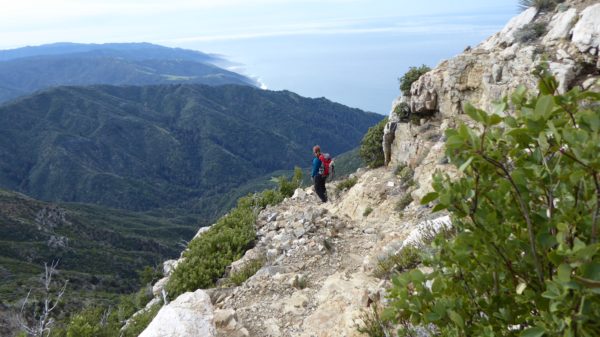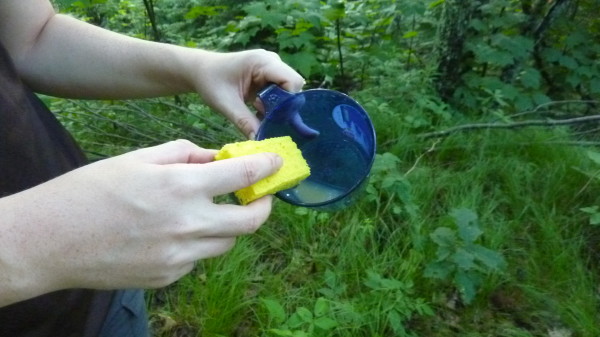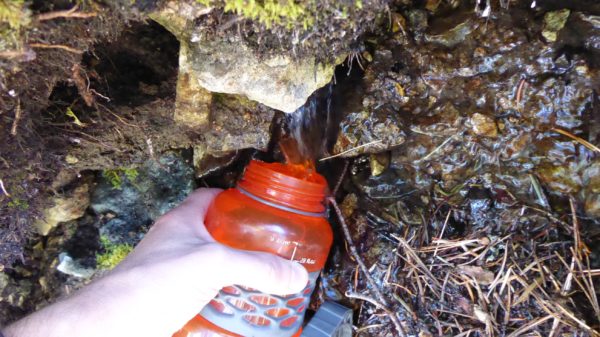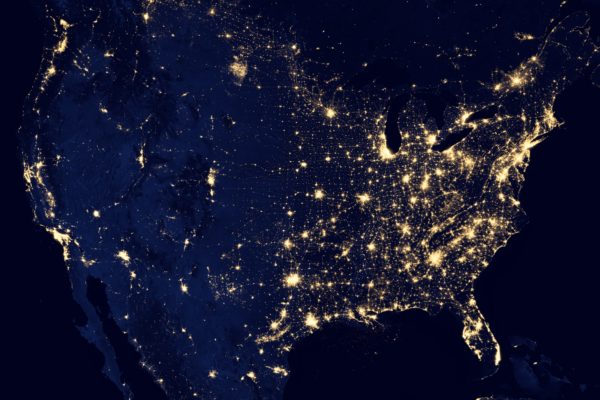The United States is home to some of the world’s most rugged and remote long-distance hiking trails. These trails, with their diverse and stunning landscapes, are a magnet for hikers from all corners of the globe, promising an unforgettable adventure.

The ‘triple crown’ of trails, a term used to refer to the three most popular long-distance hiking routes in the U.S., includes the Appalachian, Continental Divide, and Pacific Crest trails. These trails, each with its unique challenges and rewards, are a significant part of the long-distance hiking culture in the U.S.
Your choice of trail should align with the type of experience you seek. Whether it’s the bustling Appalachian mountains, the secluded crest of the central Rocky Mountain range of the CDT, or the unique blend of high desert and mountains of the PCT, we’ll provide detailed information on each to help you make an informed decision.
First, you want to ensure you can get to the United States.
How to Enter the United States
The United States government regulates who can travel into the country. Permission to enter can take time and effort.
- If you will be hiking in the United States for fewer than 90 days, you may not need a visa and may be eligible for a Visa Waiver. To understand the rules for your country, please consult the Visa Waiver webpage.
- If you expect to travel longer than 90 days, you must obtain a six-month multiple entry Tourism B-2 visa. For information about applying for a visitor visa, including documentation and fee requirements, visit travel.state.gov.
- You must review your local U.S. Embassy or Consulate website for specific visa application procedures or ineligibilities. You can find a list of U.S. embassies and consulates here.
- To apply for a B-2 visa, follow these steps from the U.S. State Department website. You’ll be required to fill out the form, upload a photo, pay a fee, and schedule an interview. The application will ask you for a contact in the United States. If you have ordered from Outdoor Herbivore and need a U.S. contact, please send us a note requesting assistance.
- Having a visa does not guarantee entry to the United States. It allows you to travel to a U.S. airport or other point of entry. Once you arrive, you must obtain permission from U.S. Customs and Border Protection (CBP) officials to enter. Learn more about admissions and entry requirements by reviewing the CBP website. See also traveling with backpacking gear and food products to learn about airline and customs restrictions for packing gear and bringing food to the United States.
Consider Travel Insurance
Although you are likely healthy now, there is always the chance of developing a sudden illness or injury while here. We recommend getting travel health insurance if you plan to stay in the United States for several weeks or more. Medical care in America is exceptionally costly without coverage. You absolutely do not want to be treated in an emergency in the U.S. without healthcare insurance. Coverage varies based on your country of origin, the hiking conditions (high vs. low altitude), length of stay, pre-existing medical conditions, etc. Generally, coverage will be easier to find if you stay below 4,000 meters.
There are specific keywords insurance companies don’t like to hear and will often deny coverage if you mention it:
- Ice-axe, crampons/spikes
- Hiking at altitudes over 4,000m / 13,000 feet
- Hiking solo / without a guide
Shop around for quotes, and if you talk to an agent, mention that you will be traveling on a national hiking trail/footpath. World Nomads, BIG CAT Travel Insurance, Allianz, Safetywings Nomad Insurance, World Trips, and CoverMore insurance are some places to start.
Getting to Trails
What foreigners find most surprising about America is how huge it is. Driving across the country without stopping or sleeping will involve 48 hours of travel. Most of the country also lacks public transportation. Don’t expect to get to the trailhead without hiring a car or driver. We recommend you book a flight to the nearest airport where you will be starting on the trail and then use a rideshare app to get to the trailhead. Download Lyft and Uber because these two are available in most locations. Be aware that when leaving the trail, cell coverage may not be available in smaller towns. Therefore, getting transportation off of the trail may be a challenge. Many hikers resort to hitchhiking.
What to Expect on American Hiking Trails
If you are coming to hike in the United States for the first time, you can expect solitude on the trail. Outside of National Parks, guided hikes and large tour groups are not a common occurrence on trails. Americans value independence and tend to trek alone or with a partner. Outside of major cities and during the off-season, trails are relatively unfrequented. Accordingly, you should know how to navigate with a paper map. If you prefer downloading maps to your smartphone, the Guthook Guides app is a favorite among U.S. hikers.
You are expected to keep trails pristine. Hiking trails in the U.S. traverse through federally protected wilderness areas. Some wilderness areas prohibit campfires or require a fire permit. Regardless of the path you hike, you should always abide by Leave No Trace ethics. These ethics, which include carrying out all trash, camping a minimum of 61 m from water sources, and staying on marked trails, are designed to minimize the impact of hikers on the environment and ensure the preservation of the wilderness areas you’ll be exploring.
- Protect water source quality by not washing your dishes or bathing in water sources.
- No matter how clean the spring looks, we recommend always treating your water after collecting it.


Trail Permits
Wilderness permits are required on certain trail sections. Be sure to do plenty of research to understand what permits are needed. Give yourself ample time ahead of travel to secure them.
Pacific Crest Trail Permits
If you plan to hike 500 or more continuous miles on the PCT in a single trip, the Pacific Crest Trail Association can issue you an interagency trail-wide single permit. If you are hiking a shorter distance on the PCT, you’ll need to apply for permits for the sections from each agency that manages those sections of the trail.
Appalachian Trail Permits
There is no single interagency permit for the AT. You must obtain separate permits for backcountry camping in these two national parks: The Great Smoky Mountains and Shenandoah.
Continental Divide Trail Permits
There is no single interagency permit for the CDT. CDT travelers must obtain permits for camping in several areas, such as Glacier National Park, Yellowstone National Park, Rocky Mountain National Park, Blackfeet Reservation, and Indian Peaks Wilderness in Colorado. Some areas allow you to fill out the permits at the trailhead for free. More information on permits is available on the CDT Thru Hiking website.
Which Hiking Trail is Right for You?
Because the U.S. is incredibly vast, it has diverse terrain and culture. It is all here, from miles of beaches to snow-covered mountains to volcanoes and swamps. Your experience is mainly determined by where you go. You’ll have to decide what type of experience you’re after.
- The Pacific Crest Trail has fewer people, minimal cell coverage, and offers a more remote wilderness experience. Expect to be on your own for most of the trail. Be prepared to spend the night alone in the wilderness without access to business services. Trail signage is minimal. You should be familiar with basic survival skills and wayfinding. Bring a tent because there are no trail shelters.
- Are you the type of person who enjoys the social aspect of hiking? Consider hiking the Appalachian Trail starting in Georgia during the prime season. Most of the trail has good cell coverage and passes near and through numerous towns. Trail-town businesses accommodate hiker needs with restaurants, post offices, lodging, laundry facilities, and shuttle services. The AT is well-marked. You can get by without a map, but we recommend having a paper map as a backup.
- Are you an experienced hiker who desires solitude and a challenge? The Continental Divide might be right for you. Be warned that route finding can be difficult on this trail because some of it is incomplete. About 30% of this trail will not have signage, and you will have to walk on roads or make your own path.
- Of course, there are many other less-known trails to choose from. See the map below for more.

Planning your Hike & Food Supply
One helpful resource for planning your hike and ordering backpacking food is Outdoor Herbivore. For international hikers, we can be your dedicated U.S. contact if you will be purchasing any trail food from us. Please contact us to make a request.
More useful websites for researching your hike
To read the real-life accounts of an American backpacker, check out the quick and dirty guides by pmags.
AT: appalachiantrail.org, the AT Guide
CDT:continentaldividetrail.org
PCT: pcta.org, halfway anywhere
Other Trails: The Best Short(er) Thru-Hikes in America
Enjoy your visit!
